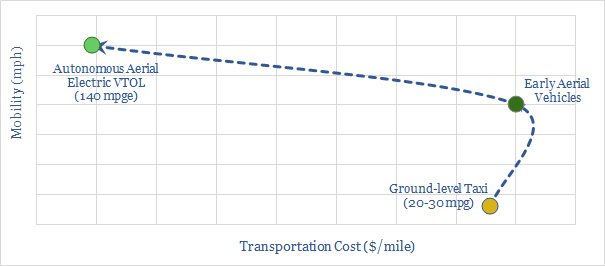Aerial vehicles will do in the 2020s what electric vehicles did in the 2010s. They will go from a niche technology to a global mega-trend that no forecaster can ignore. The technology is advancing rapidly. Fuel economies and costs will both be transformational. Aerial vehicles accelerate the energy transition.
These conclusions are all explained in depth, in our new, 20-page insight…
Pages 2-3 demonstrate the need for aerial vehicles, as urban mobility has begun deteriorating, after 200-years’ of progress.
Page 4-5 recap the military development of drones, stretching back to the late 19th Century, accelerating with the US’s Predator and Reaper programmes.
Pages 6-9 identify leaders among 110 companies, employing 50,000 people, which have now flown over 40 aerial vehicles; from start-ups to aerospace heavy-weights.
Pages 10-11 describe average flight parameter across the different vehicle concepts we screened, including speeds, range, payload and fuel-economy of aerial vehicles
Pages 11-13 show electric vehicles leading on the metrics above, with unparalleled fuel economies, which we replicated, bottom-up via the equations of flight.
Pages 13-14 shows the future is battery powered for aerial vehicles, at today’s battery densities, creating a vast opportunity for fast-charging infrastructure.
Pages 14-18 calculate exceptional economics can be attained, comprehensively bridging to levels that are 65-85% below today’s ground-transportation.
Pages 19-20 summarise the hurdles, presenting the best counter-evidence we can find to legal, regulatory and “adoption” pushbacks.
